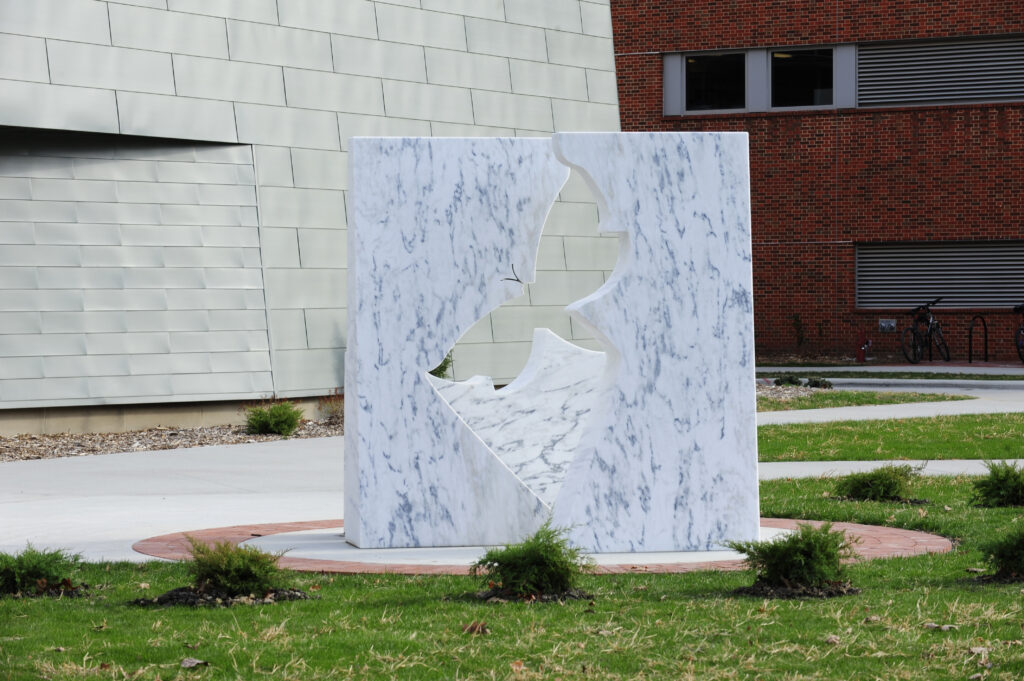
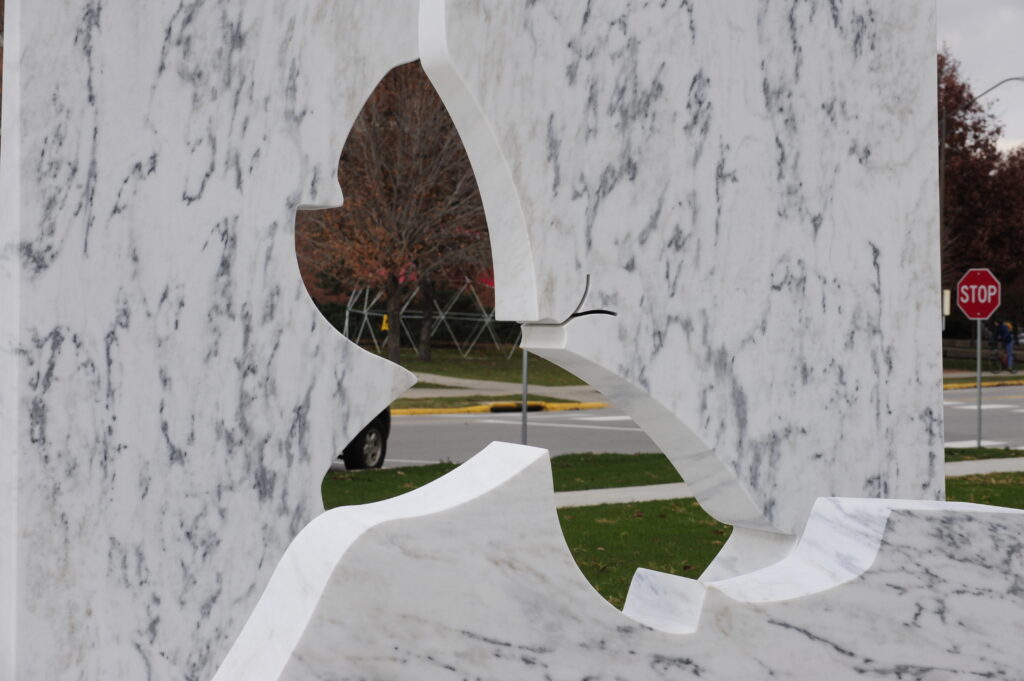

About the Art
The Moth is located outside Coover Hall, the electrical and computer engineering building which inspired the 2008 sculpture. The Moth is ever-changing – with each step the viewer takes, the “negative space” image shifts. Constructed from three slabs of Vermont marble, the sculpture changes throughout the day and year, as light hits or passes through the marble, casting its shadow upon the concrete.
Legend holds that the first use of the word “bug” to describe technical difficulties occurred in 1947 when Harvard scientists, including Admiral Grace Hopper, PhD, had to literally “debug” their computer. Although the first moth that coined the term was found dead, and had to be picked apart, this sculpture is about piecing things back together.
Moths are tiny and have short lives. The moth of the sculpture does not actually exist – it is only a void, or an empty space. The material Adams chose is sturdy and implies permanence; the grand scale of the art implies importance. Together they form a contrast between the tiny, fleeting subject and the way it is portrayed.
The Moth serves as a metaphor for life on a college campus. The Vermont marble acts as a window, framing the moth image in new and surprising ways, reminding the viewer that they may need to adjust themselves to see things differently.
About the Artist
Mac Adams is a world-renowned artist. His innovative use of light and shade plays elaborate games with shadows and natural light. Born in Wales in 1943, his art has been featured in museums around the world. Examples include: the Victoria and Albert Museum in London, UK; the La Jolla Museum of Contemporary Art in San Diego, CA; and the Museum of Modern Art in New York City, NY.
Adams’ public installations often incorporate the sun’s position to make fleeting figurative shadow images only visible at certain times of day. The following static sculptures use light and shadow to create different silhouettes depending on the time of day.


Mustangs at Noon, 2000, City of San Antonio for the Henry Gonzalez Convention Center
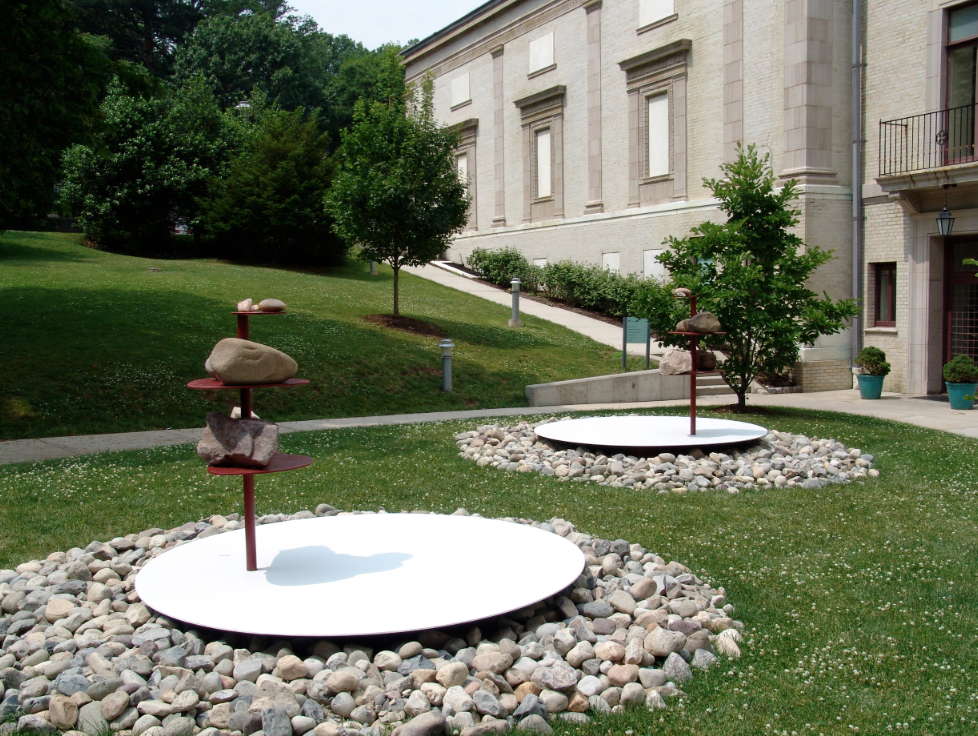
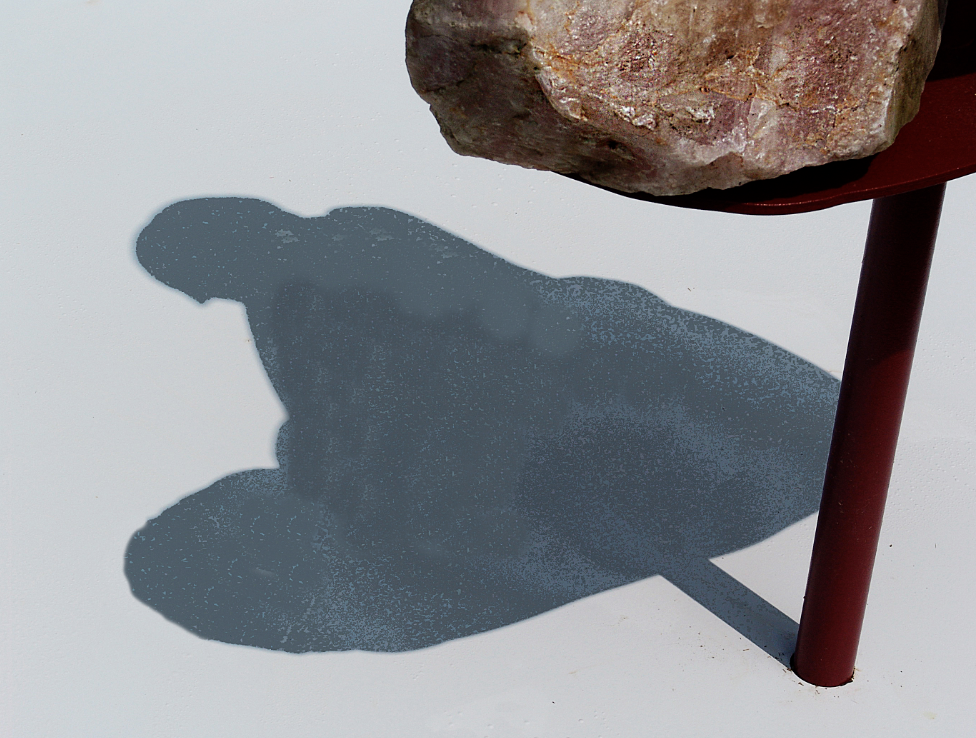
East West Buddha, 2005, New Jersey, USA
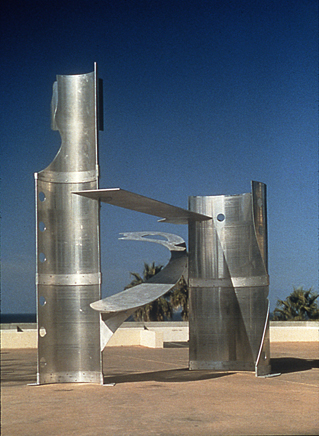
Fountain Head, 1989, La Jolla Museum of Contemporary Art in San Diego, CA
Adams created one of the first memorials dedicated to the Korean War, which was installed in Battery Park, NYC in 1991 (see below). Although constructed of different materials (Pennsylvania black granite vs. Vermont marble), both The New York Korean War Memorial and The Moth, form the subject with a void.

New York Korean War Memorial, 1991, Pennsylvania black granite and stainless steel, Battery Park, New York City
Relevant Terminology/History
Computer Bug a flaw or glitch in a computer program, design or system. Today, software bugs can impact the functioning, safety, and security of computer operating systems. The picture below shows notes related to the bug found in a Harvard computer in 1947.
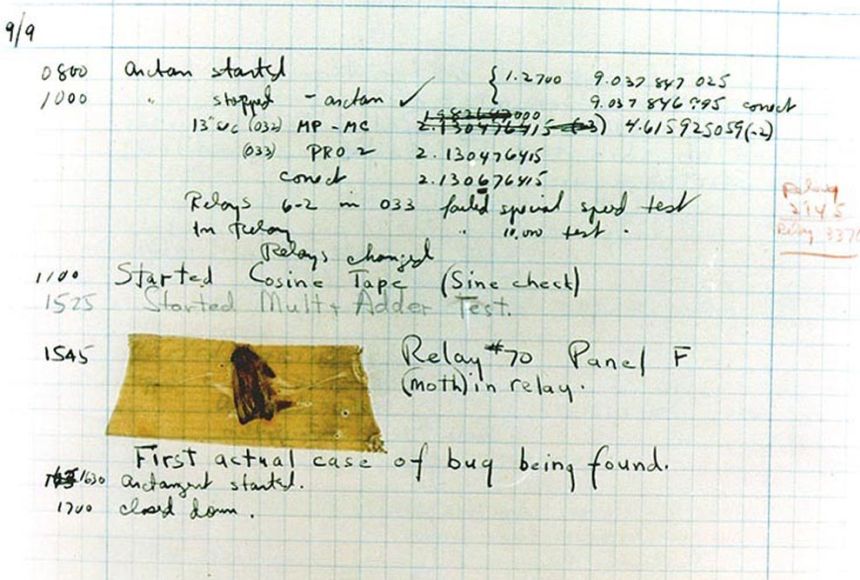
Photograph of the moth trapped inside a 1947 Harvard computer; image courtesy of National Geographic.
Admiral Grace Hopper, PhD was an American computer scientist, mathematician, and United Stated Navy rear admiral. She was among the team who found the first-reported computer bug. She is often given credit for reporting the bug, but that may not be correct. She was, however, the person who likely made the incident famous. For an overview of Admiral Grace Hopper, PhD, visit her Wikipedia page.

Photograph of Admiral Grace Hopper, PhD, 1984; image courtesy of Wikipedia.
*Fun Fact: Thomas Edison reported “bugs” in his designs as early as the 1800s. Edison was an American inventor (1,093 US patents) and businessman whose inventions have had a daily impact on modern life. Examples include: early versions of the electric lightbulb; the phonograph; and the motion picture camera. For more information about Edison, begin with his Wikipedia page.

American inventor Thomas Alva Edison holding a light bulb in his laboratory. Menlo Park, 1910s, photo by Mondadori via Getty Images
Negative space/white space are terms used in art to describe the area surrounding a subject. It typically lacks details, exemplifying the focal image. Negative space is most evident when the space around the subject forms an interesting or artistically relevant shape.
Rubin’s vase (image center) is an optical illusion, which implements the technique of negative space. An ambiguous or reversing two-dimensional form, this art creates a visual effect based upon perception. The viewer is presented with two shape interpretations, but only one is visually prominent at a given moment. Either the tan lamp light is seen as the background, with the dark face silhouettes as the subject, or vice-versa. Rubin’s vase is a famous example of the figure-ground distinction the brain makes as part of its visual perception.

Rubin’s vase; image courtesy Wikipedia.
M.C. Escher was a Dutch graphic artist (1898-1972). He created mezzotints, lithographs and woodcuts inspired by mathematics. Two examples follow. To learn more about Escher and his art, you can begin with his Wikipedia page.
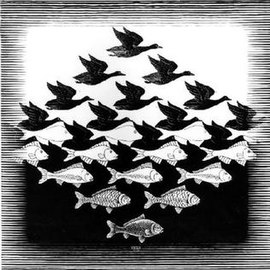
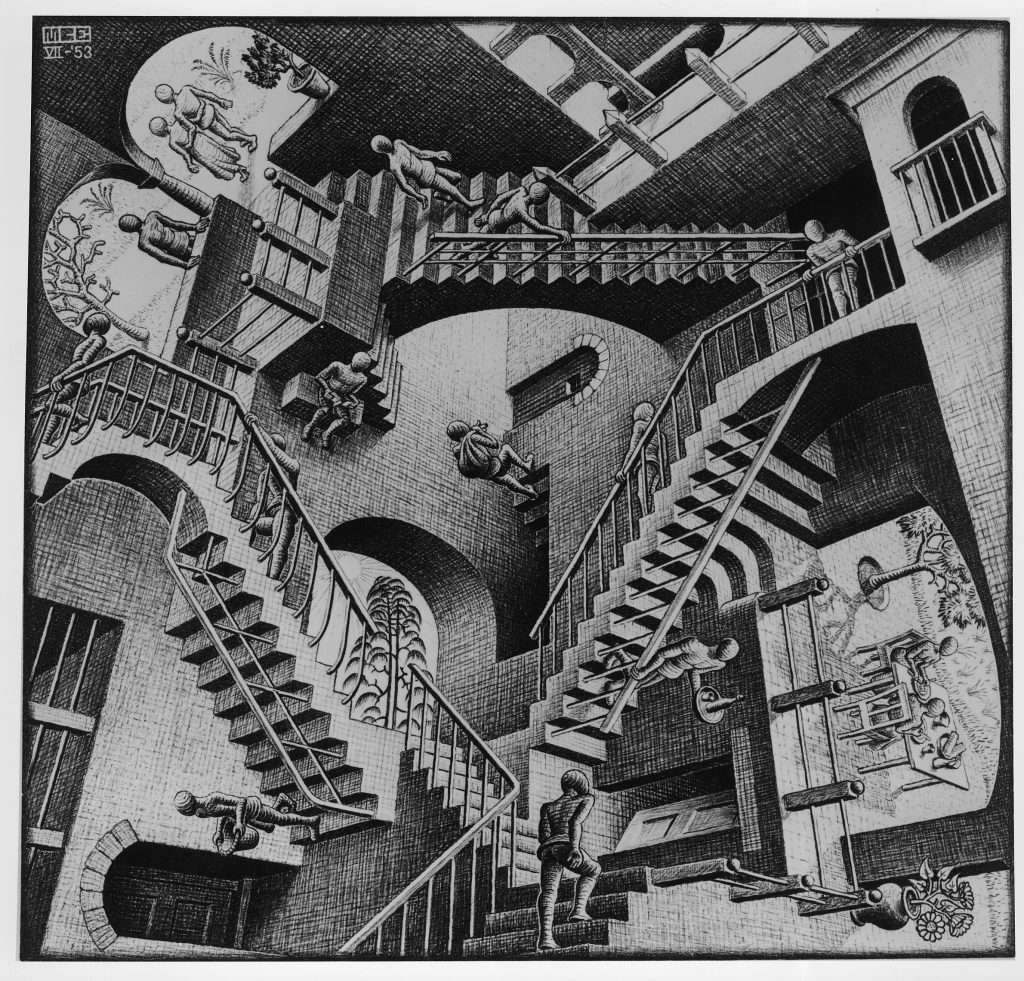
Sky and Water I and Relativity
The images below are further examples of negative space using optical illusion. You may see a different image defined by the white area and another by the black area.
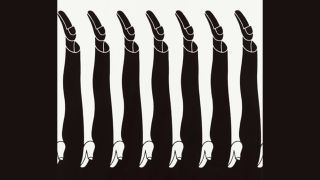


Learning Guide

- What do you think the title has to do with the art?
- Why do you think Number Character 3 is speaking about the art?
- How does the red image with white numbers relate to the art?
- How does the hidden blue image relate to the art?
- Do you think the moth image is defined as negative or positive space?
- What is the difference between a moth and a butterfly?
- How does Adams use light to create shadows in his sculptures above?
- Where is Vermont?
- Are the Vermont marble slabs simply there to enhance the ‘subject’ which is a moth, or are they themselves the focal point?
- Is marble a harder stone than granite? Which are tombstones usually made from and which do you think is easier to carve? Which famous Italian sculpture carved La Pieta in Carrara marble? Where does Carrara marble come from?
- Which of Edison’s inventions do you use daily?
- Why do you think the conference series designed to bring research and career interests of women in computing is named after Grace Hopper?
- What image do you see first in each of the optical illusion images? Do you see the same first image (black or white) as your family or friends?
- Which is your favorite optical illusion image presented? Why?
